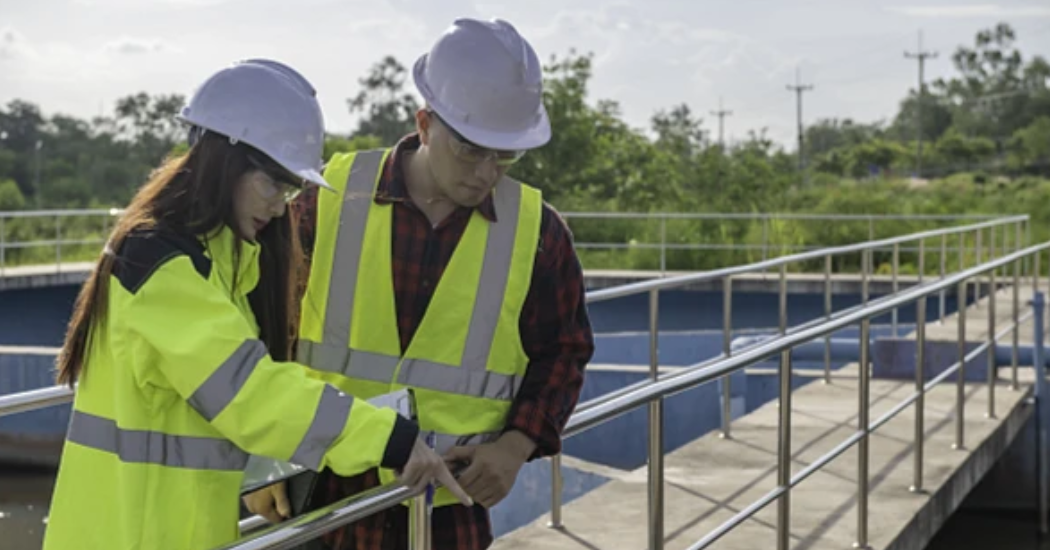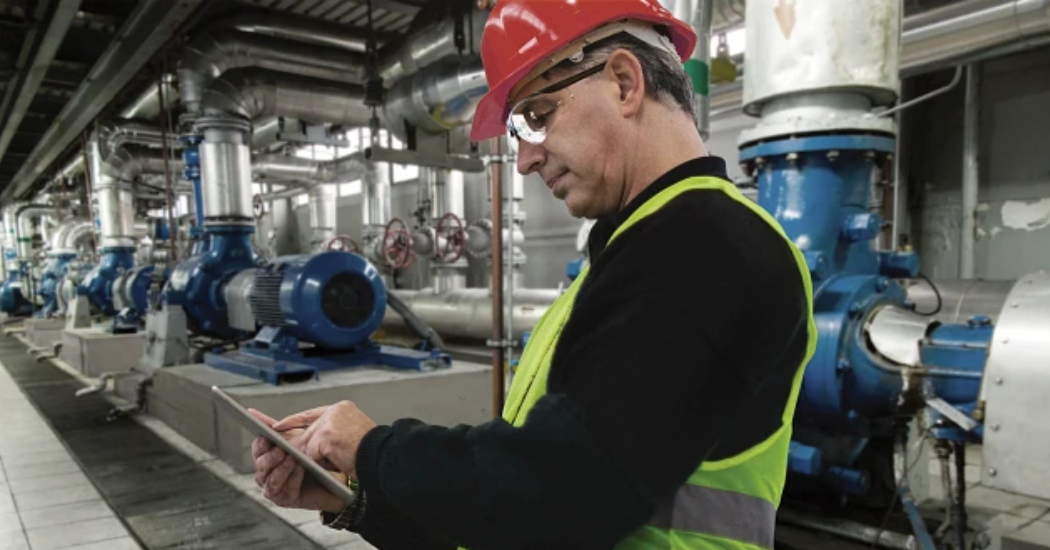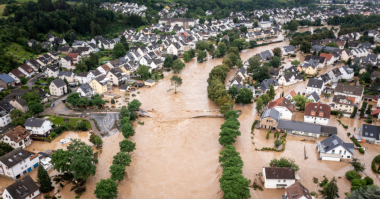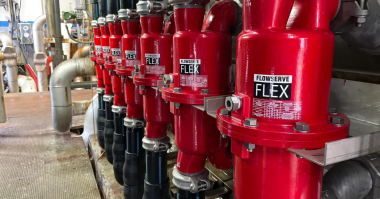The escalating global need for clean water, spanning drinking, agricultural, and industrial applications, is propelled by population expansion and ongoing development. In some countries, the forecasted need could be twice the available supply by 2030.
This pressing reality has prompted many nations to prioritize water security. They’re significantly increasing investments to expand their national and local, municipal water supplies along with sanitation and wastewater treatment facilities.
The operators Francesco Giuseppe Ladisa talked with say they want to be confident about their water and wastewater plant uptime. They need superior flow control equipment to reliably meet demand. They also seek digital solutions to monitor and analyze water process conditions and provide data-based insights to predict maintenance needs.
And to avoid unplanned downtime, maintenance managers tell Francesco they rely on quick turnaround for equipment service and repair offered by the most experienced water industry leaders.
Every drop counts, which means that operating water processes at peak efficiency is critical. That’s why Francesco encourages reliability managers to invest in digital water solutions that provide them with the predictive power to see what matters. With a complete view of equipment performance and predictive maintenance capabilities, digital water processes can be more reliable and cost-efficient than ever — at a time when our world needs them most.
High-stakes operations and priorities are drivers for digitization solutions
Across the water marketplace, Francesco sees systems, operations and maintenance teams working overtime to manage supply in order to meet ever-growing demand. They are also tasked with meeting requirements for cost reduction and efficiency. Desalination plant operators, for example, must adhere to requirements from plant developers and owners to keep the price of water trending downward.
In addition to operating costs, cybersecurity, missed production targets and water quality control top my list of significant challenges across the industry. These and other concerns have only intensified in often understaffed facilities operating with antiquated distribution and control systems.
Equipment failures result in costly downtime and repairs, fines and water loss. Failure can further lead to contamination and health risks. This poses a danger to the billions around the world living in areas of high or extremely high water vulnerability, who depend on the performance of these water systems.
Environmental, social and governance (ESG) goals must also be met as our world shifts to cleaner and more sustainable practices.
Demand from consumers, energy costs and regulatory requirements vary from region to region. But the water project developers and managers Francesco has spoken with recently are looking for ways they can address common pain points, such as:
Shortage of skilled technicians
Limited labor availability makes it difficult to monitor water equipment and processes effectively. This becomes even more challenging in water, desalination and wastewater facilities with hundreds of pumps spread across large areas or in water companies operating remote facilities with limited or no technical staff on-site.
Inadequate IT expertise
Operators focus on moving water, not information technology (IT) connectivity. Without the technical expertise to fully understand the intricacies of remote monitoring, cloud infrastructure and data security, some water plant operators are hesitant to adopt new predictive maintenance solutions.
Reactive focus
Because resources are spread so thin, maintenance managers can only respond to issues once things go wrong. Technicians are trained to respond to equipment problems, not to predict issues and act before they occur. This means that when something goes wrong, it really goes wrong.
Lack of capital
Most water facilities are publicly funded, so reliability and quality managers carefully scrutinize spending to keep costs down. Unlike other industries, water project developers and operators believe they don’t have the option to invest in cloud-based infrastructures or new technologies that can help them lower the total cost of ownership. So, they often attempt to make do with existing equipment or purchase less advanced equipment because the upfront costs are less expensive.
Transforming daily water operations and long-term resiliency
Francesco expects digital technologies will transform the economics and reliability of the water industry.
These technologies can optimize day-to-day water management and build long-term resiliency to disasters and climate change, according to the International Water Association (IWA). Such improvements can lead to increased water security for the industrial, commercial, agricultural and domestic sectors, the IWA reports. Francesco agrees with their assessment about how these changes will directly impact economic security and growth.
Enabling this digital water transformation are advanced sensors, data analytics and artificial intelligence. Examples include:
- Pumps, valves, seals and actuation equipment can be networked in internet of things (IoT) systems to monitor, record and analyze flow, pressure, temperature, vibration and water levels.
- End-to-end digital water solutions can include real-time monitoring at central facilities where experienced technicians watch for deviations from process requirements, equipment operating ranges and water quality standards.
- When issues are detected, water plant supervisors can proactively respond to schedule maintenance or repairs before equipment failure occurs.

Water plant supervisors assessing equipment at a water recycling plant for reuse.
How water plant managers can leverage Flowserve RedRaven digital technology
Francesco has often been asked whether IoT technology makes sustainability, operational efficiency and reliability in the water management industry possible.
There’s no doubt. Digitization gives systems operators a clearer picture of what matters in their pumps, valves, seals and actuation equipment. With those powerful insights, no operational goal is too big.
That’s why Francesco is always excited to talk with water plant and reliability managers about RedRaven, Flowserve’s complete end-to-end predictive maintenance solution for the industrial space. Maintenance manager, operation supervisors and technicians can proactively schedule maintenance and act before equipment issues cause failures that disrupt water production.
RedRaven incorporates sensors, networking and advanced software and algorithms developed based on our decades of experience in design, engineering, manufacturing, commissioning and servicing fluid motion control solutions.
This is a huge distinction from an algorithm based on artificial intelligence/machine learning, which works from the existing condition of the equipment where the data is taken. This could cause serious problems. For example, if the initial data taken on the machine is low quality, the baseline will be skewed and future management and monitoring of this equipment will be wrong too.
RedRaven digital technology monitors and predicts equipment condition and performance over time to:
- Interpret collected data and best identify performance patterns and trends among assets
- Identity problems that are “invisible” to older supervisory control and data acquisition (SCADA) systems
- Monitor water equipment and processes in near real time
- Avoid reactive maintenance and unplanned downtime
Flowserve designed RedRaven to equip water plant operators like you with the clear insights needed to proactively identify and address issues before they cause downtime and disruptions. You can successfully lead the transition to digital water with RedRaven’s data-agnostic, cloud-native platforms.
You’ll work alongside our dedicated team of vibration-certified, rotating equipment engineers, business analysts, technicians and project managers. They’re available to offer diagnoses and sound recommendations 24/7, through the Flowserve Monitoring Center.
And of course, Francesco is looking forward to sharing more with you about innovative digital water solutions such as RedRaven from Flowserve. Let’s talk about how RedRaven can help your company accomplish its water and wastewater plant operational and maintenance goals.
Flowserve Expertise
Francesco Giuseppe Ladisa | Global Product Leader — Digital Water
Francesco Giuseppe Ladisa is the Flowserve global product leader for digital water. He develops strategies, tactics and actions to increase IoT penetration for all Flowserve products, with a strong emphasis on digital water solutions. He is one of our experts in industry 4.0 with a keen understanding of key market dynamics that enable him to develop impactful value propositions to help customers accomplish their energy transition objectives.




